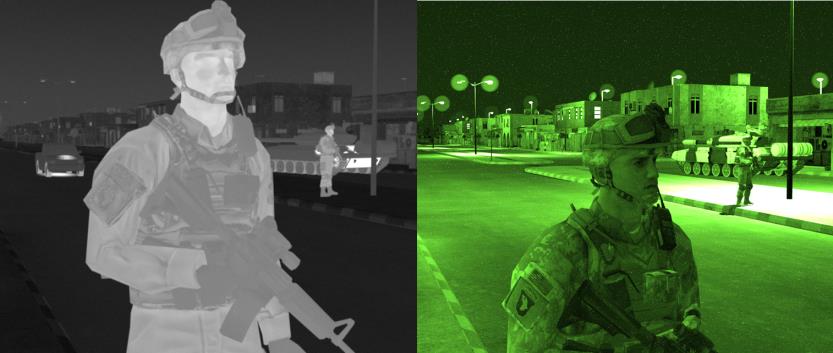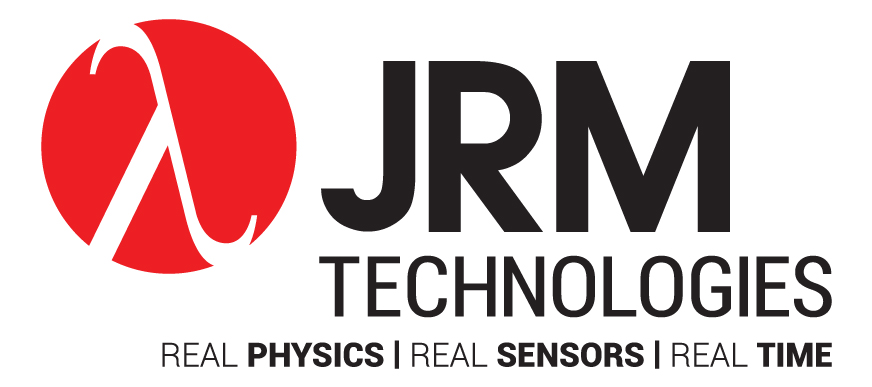OSV
OpenSceneGraph Sensor Viewer (OSV)
OSV™ (see datasheet) is JRM’s physics-based, real-time spectral EO/IR sensor scene simulator. Utilizing the popular OpenSceneGraph toolkit to load materially-encoded targets and terrain, OSV integrates JRM's SigSim and SenSim run-time libraries to predict correlated, radiometrically-correct 2D sensor imagery for arbitrary sensor bands, under arbitrary weather conditions and spatio-temporal viewing locations.
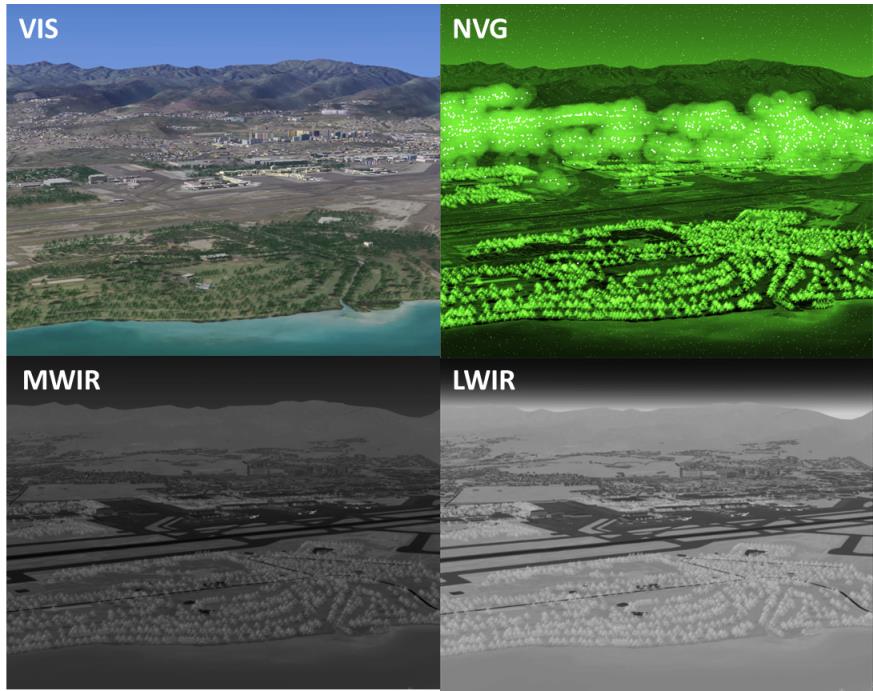
OSV allows the user to easily create and simulate a dynamic tactical sensor scenario. With its easy-to-use GUI, one can load a 3D terrain database, specify any number of arbitrary sensors, atmospheric and weather conditions, place 3D vehicle models in the scene, and create track files to establish entity motion. Mouse and joystick controls allow you to fly or drive your sensor as attached to a platform throughout the database and capture still images or full movies at the scenario frame rate. OSV is also available as a cross-platform SDK, for developers to create their own sensor IG solutions.
Dynamic, Correlated Radiance Prediction for arbitrary Sensor Bands, from a Single Database
OSV employs the highly-optimized SigSim signature physics library to predict diurnal sensor-band phenomena across the UV through far IR (0.20–25.0μm) spectrum, including ephemeris, atmospheric extinction and scattering parameters, natural and man-made irradiant influences, and surface temperatures.OSV then applies real-time GPU shader algorithms for spectral atmospheric transport and angle-dependent BRDF reflection and emission, to compute radiometrically-correct observed at-aperture imagery under dynamic environmental and object state conditions.
Dynamic Post-Aperture Sensor Effects
Once the 2D at-aperture radiance image is formed in the GPU, OSV’s built-in SenSim library provides real-time, physics-based simulation of post-aperture sensor noise, blur, gain, and haloing effects, driven by user-defined optical, detector array, signal processing, and display parameters.
User-defined, Engineering-level Physics Controls
The OSV GUI and associated XML scenario files allow user control of true physics parameters for the environment and sensors. Alternatively, these parameters, as well as platform and entity positions and orientations, may be fed remotely to OSV in real-time via a TCP/IP Ethernet link..
High-Fidelity, High-Performance GPU Processing
All modes use 32-bit floating point GPU processing for signatures and atmospherics; full spectral rendering into a 32-bit float frame buffer to real-time 60-200 Hz for fast passband rendering to a standard 8-24 bit integer frame buffer.
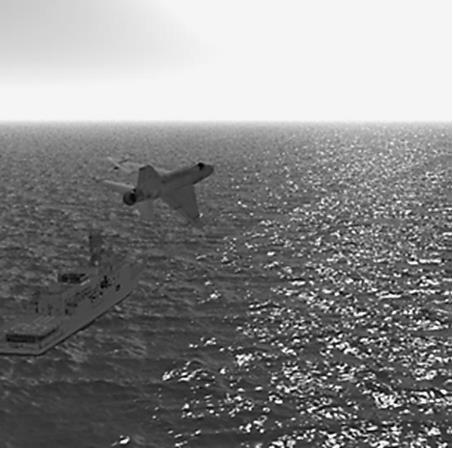 |
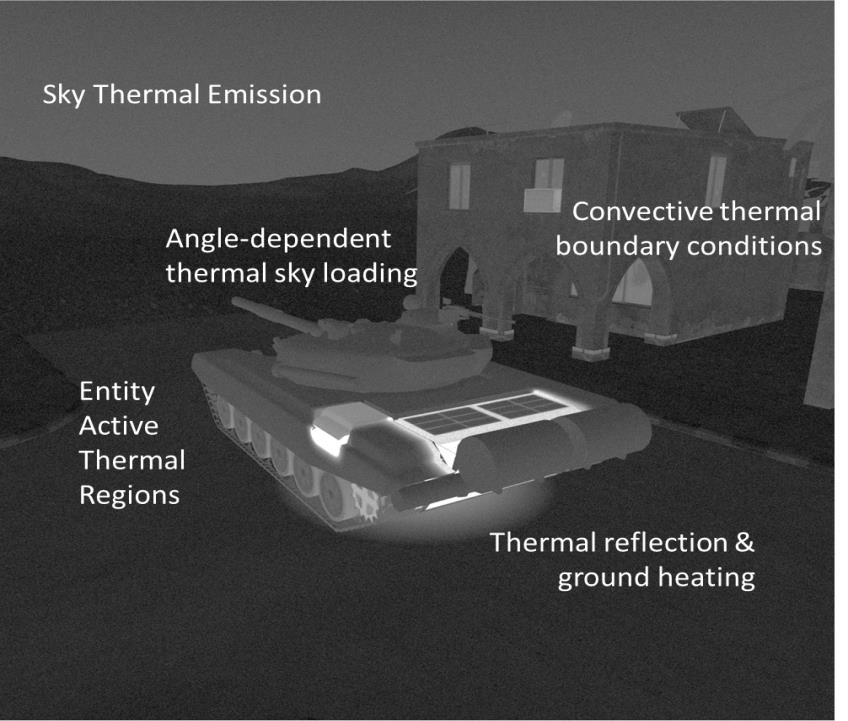 |
